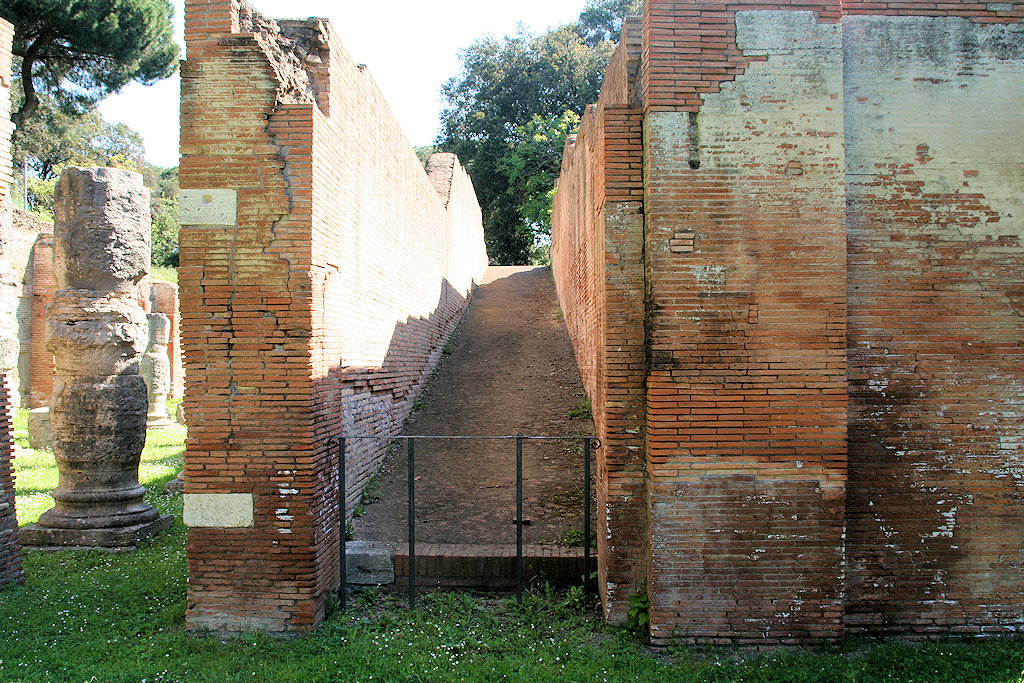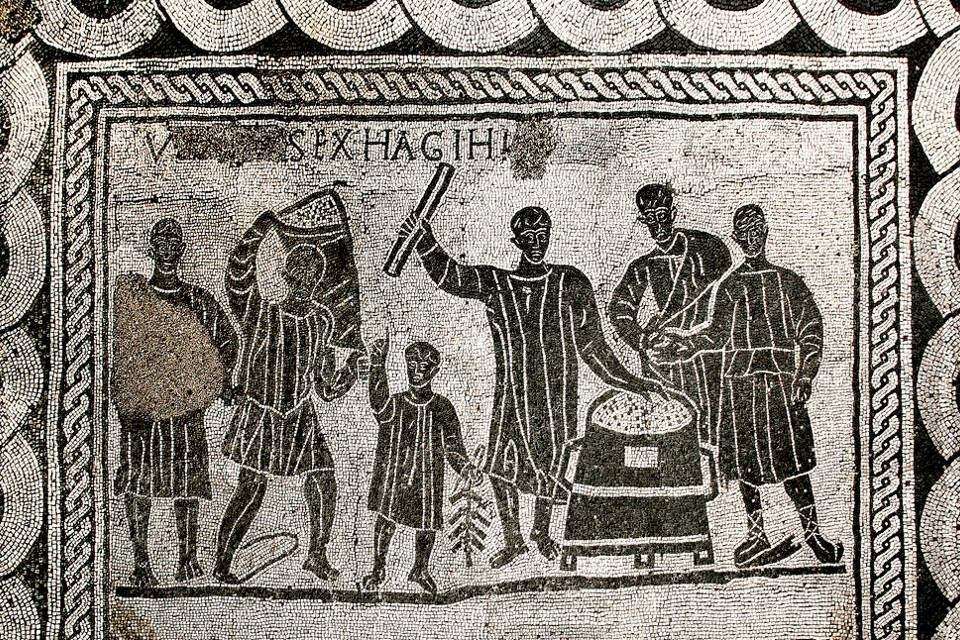Storage in the ports
Many huge warehouses have been found in the ports, in Ostia on both banks of the Tiber, in Portus especially around the basin of Trajan. Many of these buildings must have been Imperial property. The Emperor had also stationed officials, procurators, in the harbours. Their first task was to arrange the importation of goods for the people of Rome, purchased by the Emperor, or produced on Imperial domains such as mines. Importing grain was paramount, but also, for example, wood that was used as fuel in the Imperial baths. However, the procurators were also expected to provide a well-functioning infrastructure for private trade. The procurators had their own staff, but for transport and work in the ports they mainly relied on guilds (collegia). These were given the status of "body" (corpus), so that a single contract could always be concluded with the entire guild, instead of with all individual members. In exchange, the guilds received special privileges, a kind of tax exemption.
The horrea are now empty shells, and it is usually not clear what exactly was stored. An exception are the warehouses for grain. These are equipped with raised floors to protect the grain against moisture and rodents. Characteristic of the warehouses are ramps that led to the first floor, instead of stairs with steps. The steps of normal stairs would lead to stumbling and necessitate constant lifting.

A sloping ramp for easy transport of goods to the upper floor, in a warehouse in Portus. Photo: Jan Theo Bakker.
All kinds of activities took place in relation to the goods stored in the warehouses: registration of stock and ownership, protection against theft, legal and financial agreements. A complicated situation arose when a captain had decided to jettison goods in bad weather, in order to save his ship. An important role was played by the grain measurers. They are depicted together with porters on a mosaic next to the weighing halls in Ostia.

The mosaic with grain measurers and porters in Ostia. Photo: Bill Storage.
Wine was handled in a special way. A Wine Forum was set up in Portus, where wine was tasted and auctioned. The overall coordination of the further transport of grain and perhaps other goods may have been in the hands of the guild of the bakers in Rome. They knew better than anyone when Rome's grain supplies needed to be replenished.

Merchants making a deal (for wine?) in a harbour. Oceanus mosaic, Bad Kreuznach, Germany.
The transport to Rome was partly a continuous flow of bulk commodities, and partly an ad hoc activity for special orders. Most of the goods were transported in numerous tow boats on the Tiber.

A painting of the loading of the tow boat Isis Giminiana, found in the Porta Laurentina necropolis of Ostia. Photo: Vatican Museums.